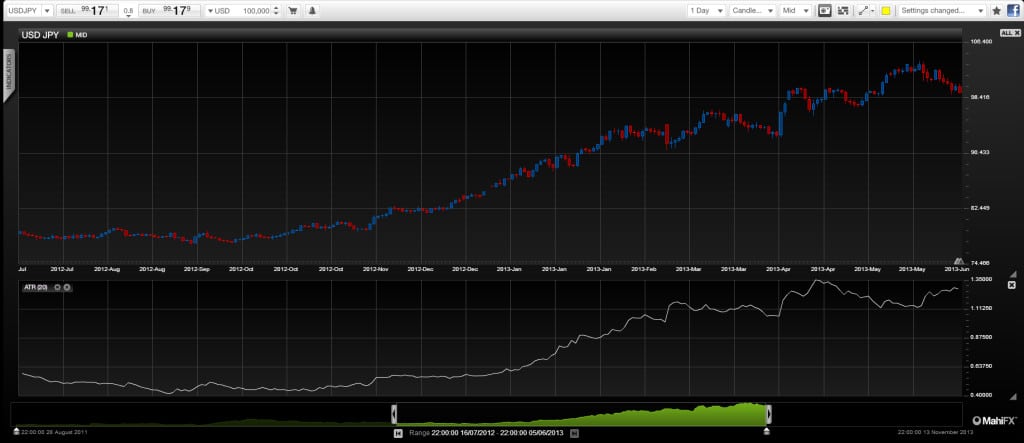Poor communication and confusing messages from central banks risk unleashing a Tsunami of volatility in underlying asset markets related to high-octane quantitative easing programmes, which could quickly spill over into exchange rates.
Most asset classes, particularly equities, have ceased to price fundamentals properly due to torrents of liquidity from central banks, which means they are even more prone to volatile behaviour than normal as the Japanese stock market has demonstrated. Abnormal price action in asset classes can quickly spill over into forex markets due to the inter-related nature of markets.
By Justin Pugsley, Markets Analyst MahiFX. Follow MahiFX on twitter at: https://twitter.com/MahiFX
The US Federal Reserve has been sending confusing messages over its clear desire to wind down its quantitative easing programme, which is spurring volatility in bond and equity markets. The gyration in US Treasuries is already influencing the USD. The Fed is trying to manage market expectations, but is so far creating unnecessary confusion over the pace and timing of its desired exit from QE – if indeed it happens this year even.
ATR shows rise in volatility for USD/JPY pair
Fed QE withdrawal depends on jobs
The reality is that the Fed’s QE programme will probably only be wound down if the US unemployment rate hits its stated target of 6.5% and unless that objective has substantially changed, it should stick to reiterating that goal and let the jobs data do the talking. This Friday’s Non-Farm Payrolls number will shed further light on the health of the US labour market.
The situation in Japan is far more worrying. The new government of Prime Minister Shinzo Abe arrived on the scene with a gusto promising radical measures to revive Japan’s economy. A big part of that plan involves ending deflation and creating a wealth effect via higher asset prices.
However, the gigantic stimulus plans by the Bank of Japan, which appear to be a key component of Abenomics, have disturbed the equilibrium of Japan’s domestic asset markets. Equities soared by 50% and are now witnessing regular extreme daily moves and JGBs have fallen, spurring somewhat sinister talk from the BoJ that it will hold discussions with market participants.
The problem of deflation in Japan is that it is a symptom of lacklustre consumer demand due to a rapidly ageing population rather than being a cause of slow or even postponed purchasing. If anything, mild inflation, if achieved, will erode disposable income levels. Also, the policy is actually pushing up the cost of credit to the economy, which is harmful.
BoJ stimulus plan may have to be curbed
There are signs of disquiet within the BoJ and Japanese government circles over the monetary stimulus aspects of Abenomics and possible unintended consequences.
There is a growing possibility that the pace of the BoJ’s stimulus plans will have to be curbed for fear of dangerously destabilising financial markets, particularly if volatile price behaviour continues. If Japan’s policy makers take that route then it is likely to be bullish for JPY, though it could see further sell-offs in Japanese equities. It would leave the BoJ discredited, which has already had its independence badly compromised by Abe’s government.
Helicopter Abe
Abenomics seems to closely follow the script set out by Ben Bernanke in his famous helicopter speech on November 21, 2002 about making sure deflation doesn’t happen here (US). The speech made reference to Japan’s deflationary environment. The cure he suggested was aggressive monetary and fiscal stimulus, like a “helicopter drop of money,” but he did not account for Japan’s ageing and shrinking population and nor does Abenomics.
The solutions prescribed in that highly influential text may yet be applied in the Eurozone, where there is a marked shift away from pursuing austerity programmes. It’s possible that once the European Central Bank has cut rates to the lowest possible levels it will find support for QE – particularly if the Eurozone is still struggling.
But central bankers must communicate their intentions clearly. Leaving markets dazed and confused is a potential recipe for huge volatility and confusion making the job of policy makers even harder.

